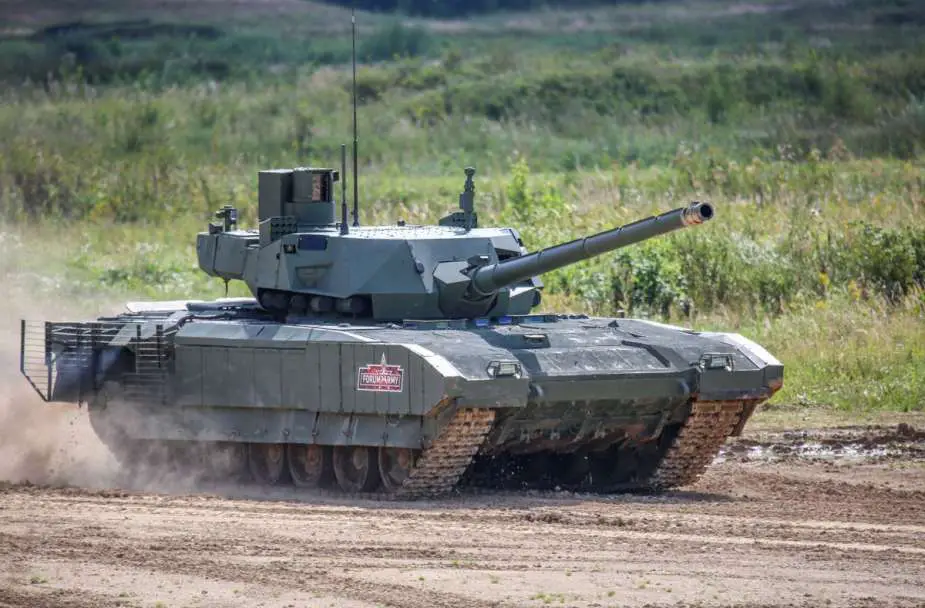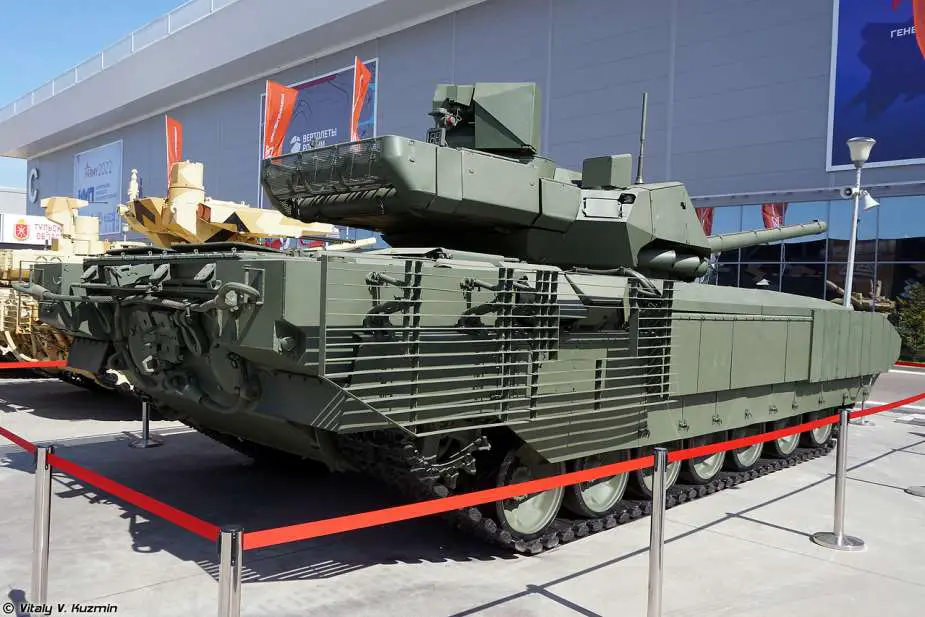According to posts on Russian social media on September 11, 2023, Russian military analyst Viktor Murakhovsky made statements regarding the T-14 Armata tanks, indicating that once the electronic systems of the T-14 Armata tanks are finalized, serial production is expected to commence, potentially leading to troop deployment as early as 2024.
Follow Army Recognition on Google News at this link

The first batch of cadets, destined to operate the T-14, was planned to complete their training in 2021, with graduation expected in 2025-2026 (Picture source: Russian social media)
However, it is important to remain cautious, as practical deliveries to the Russian army may not occur until the 2025-2026 timeframe. This 2025-2026 timeline for integration is seen as a plausible one, as suggested by Viktor Murakhovsky. He believes this is the likely timeframe for the serial deliveries of the T-14 Armata tanks to the Russian army, which contrasts with various timelines proposed by different commanders and experts.
The pace of this integration process may be influenced by the evolving military situation on the Ukrainian front, similar to other projects such as the T-72B3 Sturm unmanned tank, or the 2S43 Malva and the 2S18 Pat-S 152mm self-propelled howitzers.
The process of introducing the T-14 Armata into the Russian military has been meticulously planned, with Russian sources sharing more details. For example, the Kazan Tank School received simulators for training tank crews in the fall of 2020. On August 5, 2023, the Army Recognition editorial team reported the presence of a T-14 Armata main battle tank near this school. Simultaneously, schools in Omsk and Novosibirsk acquired equipment for training technicians and commanders in the same year.
A report from a Russian newspaper indicated that the first batch of cadets, destined to operate the T-14, was planned to complete their training in 2021, with graduation expected in 2025-2026. This aligns with the expected timeline for the actual integration of these advanced tanks into the Russian military.
On August 24, 2023, the Army Recognition editorial team reported that the T-14 Armata tank is entering its finalization phase, where development, design, and production enhancements will prepare the vehicle for operational deployment.
During this phase, the T-14 Armata will incorporate lessons learned from its involvement in combat operations as part of Russia's battlegroup South's participation in the Ukrainian conflict, as confirmed by Viktor Murakhovsky. Additionally, he revealed that the expected modifications to the T-14 Armata tanks will primarily focus on enhancing their electronic systems. Specific details about these modifications remain undisclosed, but their objective is to improve the tank's performance and capabilities, ensuring its effectiveness in modern warfare scenarios and paving the way for mass production after multiple delays.
Initially, the Russian Army had plans to acquire 2,300 T-14 tanks between 2015 and 2020. However, these plans faced significant setbacks. By 2018, a combination of production and fiscal issues led to the postponement of the expected delivery date of the T-14 Armata until 2025.
These challenges likely included budget constraints and logistical difficulties related to scaling up production to meet the initial targets. Furthermore, in July 2018, Russia announced the apparent cancellation of the main production run of the T-14 Armata, raising doubts about its future deployment.
Despite these setbacks, as of 2021, there were renewed efforts to move forward with production. The Russian state-owned TASS media agency claimed that the Armata was expected to begin serial production in 2022, with a test batch intended for delivery to the 2nd Guards Tamanskaya Motor Rifle Division. However, the tanks were planned to be officially transferred to the army only following the completion of all state tests, which is a time-consuming process involving rigorous testing and evaluation.

Russian T-14 Armata showcased at Army-2023 (Picture source: Vitaly Kuzmin)
Even after the commencement of serial production in December 2021, Rostec, the Russian state conglomerate, stated that "more than 40" Armata tanks were anticipated to be delivered to Russian troops after 2023, indicating further delays in actual troop deployment.
The 2022 Russian invasion of Ukraine had a significant impact on the planned expenditure and resource allocation. This could have further complicated the production and deployment of the T-14 Armata as resources were diverted to address more urgent needs arising from the conflict.
Technical challenges also played a role in the delays. The T-14 Armata is a highly advanced tank with innovative features, such as an unmanned turret and advanced electronic systems. Addressing technical issues, such as problems with the tank's engine and thermal-imaging equipment, further postponed its introduction into service.
Additionally, the tank's export potential and foreign interest introduced complexity to the production timeline. Russia's foreign partners, including China and India, expressed interest in purchasing the T-14 Armata. Exploring export opportunities may have diverted resources and attention from domestic production.
The T-14 Armata, an advanced next-generation main battle tank developed by Uralvagonzavod, materialized from the Armata Universal Combat Platform initiative, aimed at conceiving a versatile and adaptable combat system tailored to various roles. Unveiled publicly during the 2015 Victory Day Parade in Moscow, the T-14 Armata has since undergone rigorous testing and trials. It is destined to gradually supplant Russia's aging tank models, in consonance with the nation's military modernization strategy.
The T-14 Armata features an unmanned turret housing the primary armament and autoloader, while the crew of three is situated within an armored capsule at the hull's forefront. This design choice prioritizes crew safety and minimizes the tank's overall battlefield profile. Outfitted with a sophisticated fire control system integrating data from diverse sensors, including high-resolution cameras, thermal imagers, and laser rangefinders, the T-14 Armata aims to enhance target acquisition and precision.
Its modular design, rooted in the Armata Universal Combat Platform, enables potential customization to fulfill varied roles, ranging from infantry support and reconnaissance to heavy assault. Defensive capabilities encompass composite armor, explosive reactive armor, and an Active Protection System (APS) named Afghanit, proficient in detecting and intercepting incoming projectiles.
Powered by a 1,500-horsepower diesel engine, the T-14 Armata can attain speeds of around 56 mph (90 km/h), with an advanced suspension system bolstering maneuverability and off-road performance. Moreover, the tank's blueprint facilitates operation within a networked battlefield environment, facilitating communication and data exchange among diverse military units.
















